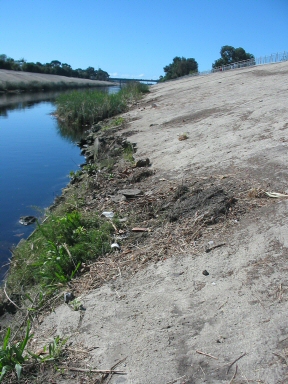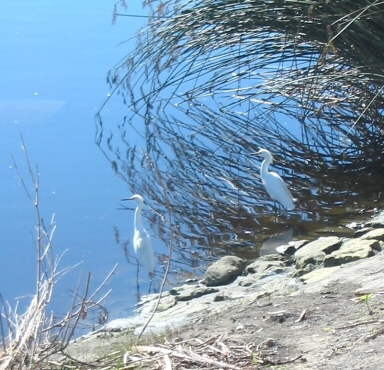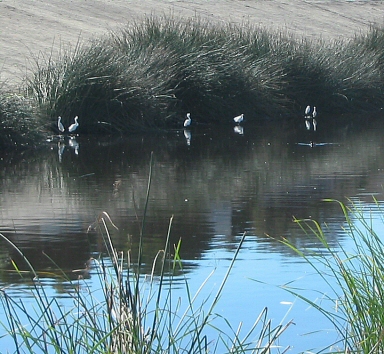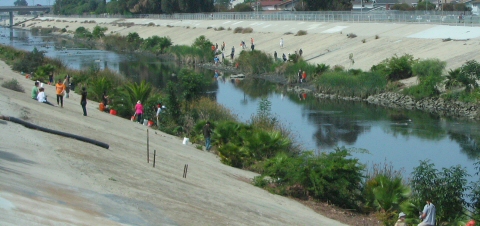
South bank facing west after vegetation removal.
BCR volunteers, among many others, were shocked to discover in late October that almost all the vegetation on the creek banks at Centinela Avenue was removed by L.A. County Flood Protection. The plants removed were non-native, invasive plants growing on the banks. The most ridiculous plants were the palm trees growing at the edge of a stream that feeds coastal wetlands. There was also the castor bean, with interesting leaves and attractive but highly poisonous seeds, from which the nerve poison ricin is made. There were nasturtiums, a low-growing colorful but spreading plant. There was fountain grass, whose light seeds are carried by the wind to land and sprout in yards and parks. And other ecologically unwelcome vegetation. Various native grasses growing in the water at the edge of the creek were left as is.
The purpose of the removal was to protect the concrete on the banks from damage by roots and trunks. There is also the concern that large masses of trees and plants could disrupt the flow of water during a storm and, in extreme conditions, cause the water to slow down, back up and even overflow the channel into surrounding neighborhoods.
A benefit of the vegetation removal is that what’s left is a benefit to local birds, as seen in these photos of egrets attracted to a more native habitat.

Egrets now frequent this part of the creek.

Egrets in the creek

Photo of the creek at Centinela Ave before vegetation removal.
